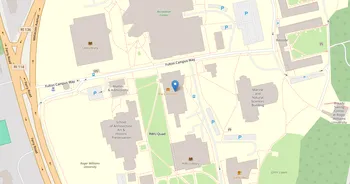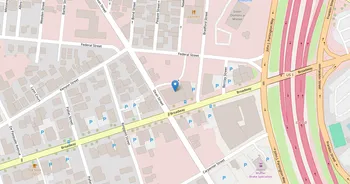Rhode Island School of Design (RISD) : Overview, Courses, Scholarships & Rankings
About Rhode Island School of Design
RISD is known for studio-first learning where ideas get tested in real time. Students build skills across making, digital media, and research, then sharpen it through critiques that prize clarity and craft. The urban campus stretches from College Hill to downtown with light filled studios, shops, a library, and an on campus art museum. Advising, tutoring, wellness services, and a career office keep students supported.
Life here runs late, with student-run shows and pop up critiques alongside gallery openings, river paths, and coffee-fueled nights. Providence's arts scene sits right outside, with chances to collaborate, intern, and show work with local partners. The culture is intense yet generous. Traditions center on portfolio reviews and campus exhibitions. Notable alumni include Shepard Fairey, Brian Chesky, and Chris Van Allsburg. It's a lot, in the best way.
Key Institutional Details
Contact & Profile
Academic & Institutional
Academic Programs & Fields of Study
Rhode Island School of Design (RISD) offers 19 degree programs across 8 major academic fields, graduating approximately 749 students annually. The most popular fields by graduate volume are Arts (10 programs, 343 graduates), Interdisciplinary (3 programs, 130 graduates), Architecture (1 programs, 129 graduates), Computer & IT (1 programs, 75 graduates) and Production (1 programs, 39 graduates). Explore program details, award levels, and graduate demographics below.
Arts (10 programs, 343 graduates)
Fine Arts, Design Studies and Creative Performance
| Program Name | Graduates | Gender Distribution | Award Levels | CIP Code |
|---|---|---|---|---|
| Illustration | 116 |
|
Bachelor's
Master's
|
50.0410 |
| Painting | 51 |
|
Bachelor's
Master's
|
50.0708 |
| Film and Video Arts | 43 |
|
Bachelor's
|
50.0699 |
| Sculpture | 40 |
|
Bachelor's
Master's
|
50.0709 |
| Fiber and Textile Arts | 33 |
|
Bachelor's
Master's
|
50.0712 |
| Photography | 17 |
|
Bachelor's
Master's
|
50.0605 |
| Jewelry Arts | 15 |
|
Bachelor's
Master's
|
50.0713 |
| Printmaking | 14 |
|
Bachelor's
Master's
|
50.0710 |
| Ceramic Arts | 8 |
|
Bachelor's
Master's
|
50.0711 |
| Fine Arts and Art Studies | 6 |
|
Bachelor's
Master's
|
50.0799 |
Interdisciplinary (3 programs, 130 graduates)
Cross-Disciplinary Studies and Integrated Research Programs
| Program Name | Graduates | Gender Distribution | Award Levels | CIP Code |
|---|---|---|---|---|
| Systems Science and Theory | 102 |
|
Bachelor's
Master's
|
30.0601 |
| Sustainability Studies | 21 |
|
Master's
|
30.3301 |
| Cultural Studies and Critical Theory | 7 |
|
Master's
|
30.2601 |
Architecture (1 programs, 129 graduates)
Architectural Design and Construction Planning Services
| Program Name | Graduates | Gender Distribution | Award Levels | CIP Code |
|---|---|---|---|---|
| Architectural and Building Sciences | 129 |
|
Bachelor's
Master's
|
04.0902 |
Computer & IT (1 programs, 75 graduates)
Computer Science, Information Technology and Cybersecurity
| Program Name | Graduates | Gender Distribution | Award Levels | CIP Code |
|---|---|---|---|---|
| Computer Graphics | 75 |
|
Bachelor's
Master's
|
11.0803 |
Production (1 programs, 39 graduates)
Manufacturing Technology, Quality Control and Industrial Arts
| Program Name | Graduates | Gender Distribution | Award Levels | CIP Code |
|---|---|---|---|---|
| Furniture Design and Manufacturing | 39 |
|
Bachelor's
Master's
|
48.0702 |
Human Sciences (1 programs, 15 graduates)
Family Studies, Consumer Sciences and Human Development
| Program Name | Graduates | Gender Distribution | Award Levels | CIP Code |
|---|---|---|---|---|
| Apparel and Textiles | 15 |
|
Bachelor's
|
19.0901 |
Education (1 programs, 13 graduates)
Educational Sciences, Teaching Methods and Pedagogy
| Program Name | Graduates | Gender Distribution | Award Levels | CIP Code |
|---|---|---|---|---|
| Art Education | 13 |
|
Master's
|
13.1302 |
Communication (1 programs, 5 graduates)
Media Communications, Journalism and Public Relations
| Program Name | Graduates | Gender Distribution | Award Levels | CIP Code |
|---|---|---|---|---|
| Digital Media and Multimedia | 5 |
|
Master's
|
09.0702 |
Admission Requirements & Test Scores
Comprehensive overview of admission criteria, standardized test score ranges, and application requirements for prospective students at Rhode Island School of Design (RISD).
Application Requirements
Data based on IPEDS for 2022-2023 academic year. Test score ranges represent the middle 50% of admitted students (25th-75th percentile). Requirements may vary by program.
Tuition, Fees & Estimated Costs
Overview of tuition rates, housing, and other annual education expenses for undergraduate and graduate students
Financial Aid & Student Support
Summary of scholarships, grants, student loans, and financial aid statistics for undergraduate students
Student Success Metrics
Graduation rates and post-graduation earnings to help assess student outcomes and long-term value of education.
Loan Burden & Repayment Outcomes
Breakdown of loan repayment rates and student debt levels by income and dependency status.
Frequently Asked Questions
Find answers to the most common questions about Rhode Island School of Design (RISD)
How much does it cost to attend Rhode Island School of Design (RISD)?
The annual tuition at Rhode Island School of Design (RISD) is $59,760 for in-state students. When including room and board, books, and other expenses, the total estimated cost is approximately $81,810 for in-state students. Additional costs include room and board $15,850 and books and supplies $2,700.
Data based on IPEDS program completions for 2022-2023 academic year. Tuition and cost estimates are approximate and may not include all fees, personal expenses, or transportation costs.
What academic programs and degree levels does Rhode Island School of Design offer?
Rhode Island School of Design (RISD) offers 19 academic programs across 8 major fields of study, with available degree levels: Bachelor's, Master's.
Most popular program areas include:
- Fine Arts, Design Studies and Creative Performance (10 programs)
- Cross-Disciplinary Studies and Integrated Research Programs (3 programs)
- Architectural Design and Construction Planning Services (1 programs)
- Computer Science, Information Technology and Cybersecurity (1 programs)
- Manufacturing Technology, Quality Control and Industrial Arts (1 programs)
Data based on IPEDS program completions for 2023-2024 academic year. Numbers reflect programs where students graduated, not all offered programs.
What is the acceptance rate for Rhode Island School of Design?
Rhode Island School of Design (RISD) has an 13.8% acceptance rate and a 51.2% yield rate, making it highly selective.
Admission statistics breakdown:
- Total applicants: 7,126
- Students admitted: 984
- Students enrolled: 504
Data based on IPEDS for 2022-2023 academic year. Admission statistics may vary by program and application cycle.
What financial aid and scholarships are available at Rhode Island School of Design?
Rhode Island School of Design (RISD) provides financial aid to 23% of first-time, full-time students, with average grants of $36,743 and average loans of $8,586.
Average financial aid amounts by type:
- Pell grants: $5,810
- State/Local grants: $1,000
- Institutional grants: $33,895
- Federal loans: $5,445
The university supports 159 students with grants and 145 students with loans annually.
Data based on IPEDS for 2022-2023 academic year. Financial aid amounts and percentages may vary by program, enrollment status, and individual circumstances.
What is the average salary for Rhode Island School of Design graduates?
Rhode Island School of Design (RISD) graduates earn a median salary of $45,932 after 6 years and $68,140 after 10 years.
The salary range 10 years after graduation spans from $29,793 (25th percentile) to $108,226 (75th percentile).
Data based on IPEDS for 2022-2023 academic year. Salary data reflects graduates who received federal financial aid (approximately 60% of all graduates). Actual earnings may vary significantly based on program, location, and individual circumstances.
Related Universities




Found something useful? Help others discover it too! Share with friends, on social media, or save for later - every share helps someone find the information they need.